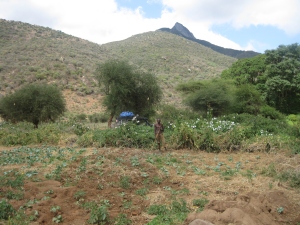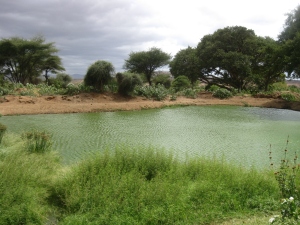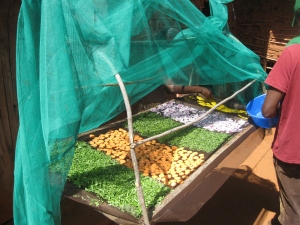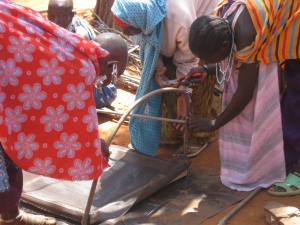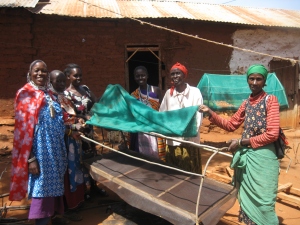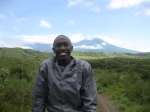
Hello family and friends! I hope all is well! I have been in Tanzania for a little over two weeks now and am loving every minute of it. I have seen some amazing views, met some incredible people, and have experienced many firsts that I wish everyone could experience with me. Unfortunately, effective means of communication are a bit difficult to access and/or expensive, so I am starting this blog to hopefully keep everyone up to date on what’s going on.
I have never blogged (not sure if this is an actual word…) before, so I apologize if it’s not very good… I will do my best to post something at least once a week though and upload plenty of pictures. Please feel free to post comments and questions. I will do my best to respond.
Below you will find an update of my activities from the past few weeks to bring you up to speed since I have arrived. I am currently in Namanga, which is on the border ofKenyaandTanzania, training on nutrition and food drying techniques. The internet connection out here is a bit slow, and they charge every half hour, so I will wait until I get back to Arusha to give an update on the happenings from this week. I should be able to post something by Friday or Saturday.
My flight across the pond…
 I arrived in Kenya late Saturday evening around 8:30pm KST [12:30pm US-EST]. Over 22 hours I had flown from St. Louis to New York, then from New York to Amsterdam and finally to Jomo Kenyatta International Airport (NBO) in Nairobi, Kenya. I didn’t think much about it at the time, but I was utterly exhausted. Upon arrival, I found that two other international flights had flown in at the same time and it was an absolute disaster. Jommo Kenyatta International is Kenya’s largest airport, but it only has one terminal with three gates (or units)… so it got ridiculous when everyone arrived at the same time. To make matters worse, there was only one luggage carousel for pick-up, so it took almost 45 min to collect all my luggage. Thankfully everything arrived safely and on time. Also, since I am still a Kenyan citizen I cleared immigration and customs in ~10 min. The line for citizens was so much shorter than for everyone else. For all the trouble I went through to get my passport renewed, that definitely made up for it. After finally making it through everything I was greeted by both my Uncles Patrick and Peter who welcomed with great joy and enthusiasm. After 17 years, it was great to be back!
I arrived in Kenya late Saturday evening around 8:30pm KST [12:30pm US-EST]. Over 22 hours I had flown from St. Louis to New York, then from New York to Amsterdam and finally to Jomo Kenyatta International Airport (NBO) in Nairobi, Kenya. I didn’t think much about it at the time, but I was utterly exhausted. Upon arrival, I found that two other international flights had flown in at the same time and it was an absolute disaster. Jommo Kenyatta International is Kenya’s largest airport, but it only has one terminal with three gates (or units)… so it got ridiculous when everyone arrived at the same time. To make matters worse, there was only one luggage carousel for pick-up, so it took almost 45 min to collect all my luggage. Thankfully everything arrived safely and on time. Also, since I am still a Kenyan citizen I cleared immigration and customs in ~10 min. The line for citizens was so much shorter than for everyone else. For all the trouble I went through to get my passport renewed, that definitely made up for it. After finally making it through everything I was greeted by both my Uncles Patrick and Peter who welcomed with great joy and enthusiasm. After 17 years, it was great to be back!
Shuttle ride from Nairobi to Arusha

My uncle Patrick kindly booked a spot for me on the Riverside shuttle from Nairobi, Kenya to Arusha, Tanzania. The drive is about 5 hours by bus, which includes a short stop in Namanga, a small town on the border of Kenya and Tanzania, to pass through immigration and get passports stamped. I still hadn’t quite adjusted to the time change so I was out of commission for about half the trip. Fortunately, I was awake for a few hours while there was daylight and got to catch some of the wonderful scenery. Being the rainy season, which lasts until June, everything was really green. Growing up in the Mid-West in the heart of the United States, and being accustomed to nothing but corn fields, the landscape was unlike anything I had ever seen before. There were a ton of trees and plants I had only ever seen in books, if it all, and the landscape would continuously change from rolling hills, to dry open plains, to farm land. It was out of this world. Just before the sunset, I was able to make out Mt. Meru, which is located just outside Arusha, Tanzania, towering over the landscape. At just about the same time, the bus driver picked up the Arsenal vs. Aston Villa game on the radio (Arsenal is my favorite soccer team). Even though Arsenal went on to lose the game, I was in heaven. What a way to kick off my adventures in Africa!
Center House Hostel:
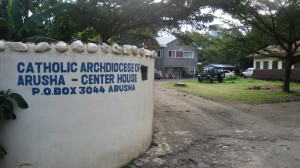
My accommodations for the first three days in Arusha were at Center House Hostel, which is located right next to Sekei Secondary school in Arusha (a local high school day school). I’ve always associated hostels with having to “rough it,” but I thought the accommodations were really nice. For the most part the rooms were pretty spacious. My room had three double sized beds (with mosquito nets) and its own shower with hot water! The hot water had a switch that had to be turned on for it to work, which I was told was normally hit or miss. However, one of the girls I met on the first day showed me the “special” procedure to get it to work – I’m really glad I stopped to say hi to her.
As for meals, breakfast and dinner were both provided every day we were there, and were just as good, if not better, than anything we had at local restaurants. The mamas (unofficial term for the elder ladies that ran the hostel) really took care of us and made us feel at home.
At Center House I also met up with my fellow volunteers: Chad, Lance, Cara, Candace, Nora and Kelsey. Chad and Lance are both from Arkansas and are doing pre-med at Hendrix College; Nora and Candace both attend grad school at the University of Michigan – Ann Arbor; Candace is form Ontario and attends Queens University, and Kelsey is from New York and attends the University of Maryland. Nora and Candace are both doing the sustainable agriculture program, and then the rest of us are doing the HIV/AIDS and nutrition program. In looking back over the past few weeks, despite coming from such different backgrounds, we have all become really close. Nothing forges strong bonds and friendships like spending a few weeks in Africa.
Host family
On Wednesday of the first week we were introduced to our host families for the summer. I was placed at the Maeda household, which is in North West Arusha in an area called Sakina, with mama and baba Maeda and their three children.
Mama Maeda owns two handbag shops in town and baba Maeda is an accountant at a chemical plant about 15 miles outside of Arusha. Their eldest is 26, and normally resides in Dar Salaam but is currently at home finishing up his MBA at a nearby international university. He also owns a pretty successful dress shop he opened close to home. He is a very promising business man. Their two younger daughters are around 15 or 16 years old, and attend secondary school (high school) at a nearby boarding school. Everyone is currently on holiday from school so the house has been pretty lively.
For the most part, everyone speaks at some level of English, so between my Kiswahili and their English communication has been fairly easy. However, I quickly discovered my Kiswahili is not quite up to par compared to the pure dialect spoken in Tanzania. Fortunately, my family has been great about teaching me new words and correcting my grammar. I hope to be much better by the end of the summer.
As for food, it’s very similar to what I eat at home: ugali (Google it), rice (wali), greens (mchicha), beef stew, chapatti, tea (chai) at least three times a day, etc. Also like home, the portions are far from moderate, so every meal is a feast. It’s awesome! Dinner is always together as a family, followed by the evening news before bed. I really don’t think I could have asked for a better host family. They have truly made me feel at home, and have been extremely helpful in helping me make the transition to Tanzania.
Transportation

I wanted to make a special note of the transportation because it’s absolutely crazy. Within the first 5 min. in a car I very quickly found out that driving laws are more like suggestions and everyone pretty much does whatever they want. I know everyone complains about driving in St. Louis, but we drive like saints compared to Kenyans and Tanzanians.
The main mode of transportation for most in Arusha is via daladala (spelling?), which are basically small minivans that run different routes throughout the city. Each daladala has a color, which corresponds to its specific route, and costs about 200 – 300 Tanzanian Shillings (TSH) to ride one way. If I don’t walk I usually take a yellow then a green daladala to get to work every day, so about 600 TSH one way.
So like I said, getting around is madness. Normally, about 16-20 people can fit comfortably in a daladala. However, the more people the daladala guy (that’s my official term) can fit in the van in one trip the more money they make, so they literally pack people in like sardines. I was once in a daladala with 27 other people, some random chickens and luggage. It was insane. My parents always joke about public transportation in Africa but it never really hit home until now. A word to Brandon, Brianna and Byron: you officially don’t get to complain anymore about not having enough space in the back of the van…
Birthday Weekend Safari:

This past Saturday we loaded up the trucks and went on a one day Safari at Arusha National Park. We saw some zebras, giraffes and a ton of monkeys. The drive around the mountain was also breathtaking. It wasn’t in my plans, but I think I will definitely have to make it out to some of the other national parks in Tanzania while I’m here. My goal is to snap a photo of each of the big 5 ( lion, African elephant, Cape buffalo, leopard and rhino) before I leave. Pictures to come!
What I Do Everyday…
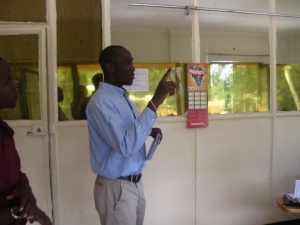

My program in Tanzania is through Global Service Corps Tanzania, a NGO that provides a number of different trainings to natives in Tanzania, which focus on effective agricultural practices, nutrition, and HIV/AIDS awareness and prevention. Most of what I teach is nutrition and HIV/AIDS (HA) material.
My first week in Arusha was primarily orientation. We toured the city, got a crash course in Kiswahili, and went over most of the material we would be teaching out in the villages. Since I am in the HA program, we got to visit a person living with HIV/AIDS to see what their life style is like. It was really interesting, on a number of different levels. I don’t have time right now, but I promise to write more on a later post.
Last week I completed my first training at a near by vocational school called VOLAP- Vocational Learning Activities Program- Institute of Career Development. Out of 27 students, there were 26 women and one man, and they were all training to become primary school teachers. For this particular training I taught with one other program volunteer and a translator. Over the week we covered everything from sexual reproduction & anatomy and HIV/AIDS progression, prevention & testing, to nutrition and cultural & gender roles inTanzania.
I’m not sure how well I did as a teacher, but I absolutely loved every minute of it. I was nervous the first day because I thought a lot of the information would either be boring or common knowledge. However, the students were really open during discussions and great about asking questions, especially when we covered reproductive anatomy and HIV/ AIDS transmission and progression. I was really surprised by some of the misconceptions many of the students held, especially regarding effective prevention measures against HIV/AIDS and the importance of getting tested. It was great being able to talk through their beliefs and share the rational behind the current recommendations and best practices.
I’m not sure how much the students took away from what we taught them, but it was great seeing them engaged and critically thinking about practices people rarely challenge. We teach that ~68% of the world’s HIV/AIDS population is in Sub Saharan African. However, there have been some extremely effective efforts, like in Kagara, Tanzania, in which transmission rates have been cut in half. The secret: spreading a little knowledge and encouraging people to use it. There is only so much you can do in a week, but we certainly did our best to do exactly that. It was a great first training experience and I certainly look forward to continuing the work in the weeks to come.
As mentioned, I will do my best to post something by Friday or Saturday. Until then, please take care!



 He enthusiastically exclaimed thank you God several times and gave me a long hug. He stared at me in disbelief and told me I looked just like mom, and then proceeded to give me his blessings to the point of tears. I’m not much of crier, but I may have shed one or two tears as well. The rest of the visit seemed to fly by. Over several hours –and many cups of tea and andazi- he prayed for me, gave me a tour of the farm, and told me stories of when I was young(er). He revealed his wishes for me now that I am a man, and finally, he gave me my very own chicken! A grandfather’s traditional blessing for his grandson. Although I grew up without really knowing my grandparents or having very many memories with them, this day totally made up for it.
He enthusiastically exclaimed thank you God several times and gave me a long hug. He stared at me in disbelief and told me I looked just like mom, and then proceeded to give me his blessings to the point of tears. I’m not much of crier, but I may have shed one or two tears as well. The rest of the visit seemed to fly by. Over several hours –and many cups of tea and andazi- he prayed for me, gave me a tour of the farm, and told me stories of when I was young(er). He revealed his wishes for me now that I am a man, and finally, he gave me my very own chicken! A grandfather’s traditional blessing for his grandson. Although I grew up without really knowing my grandparents or having very many memories with them, this day totally made up for it.












